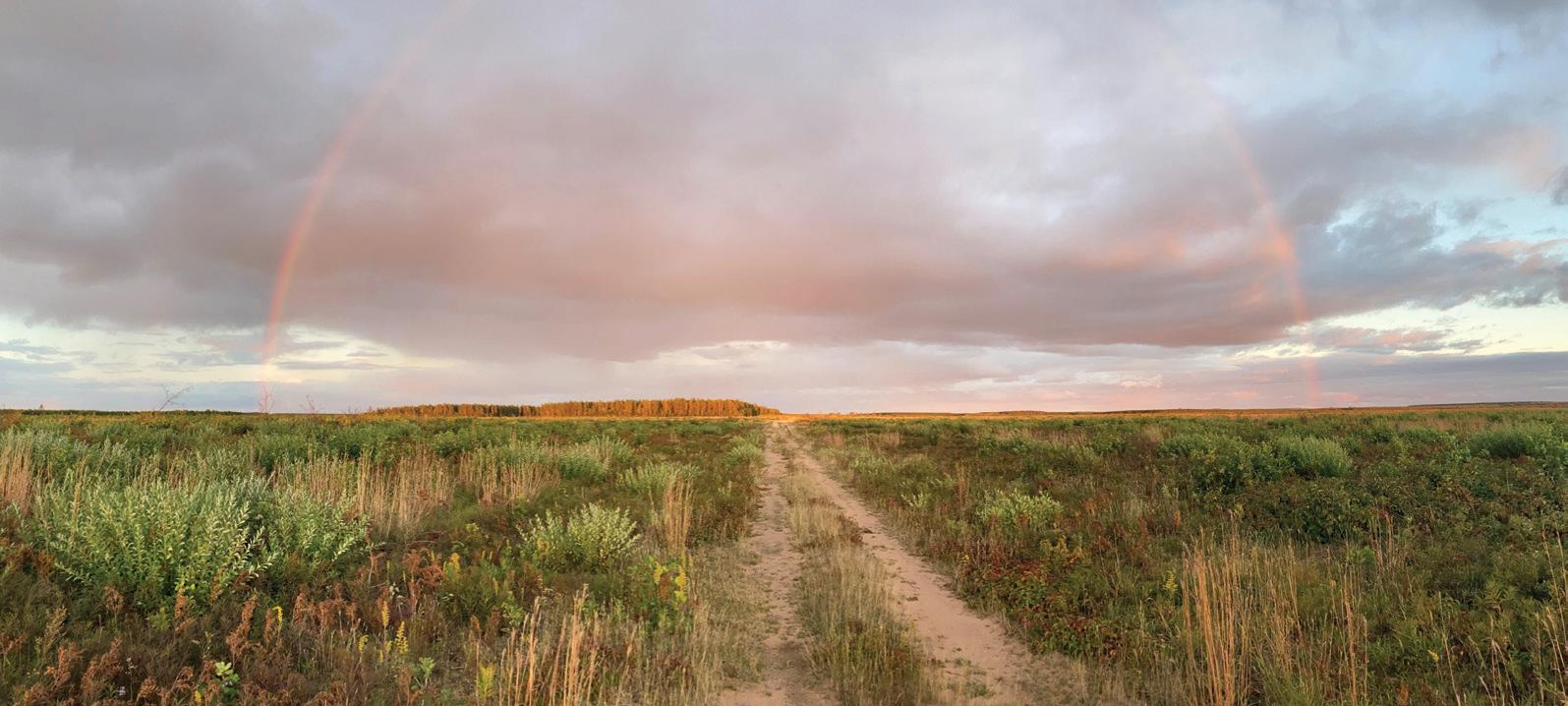
4 minute read
Fighting For Firebirds | Barrens Management Benefits Rare Game Bird
ANDI SEDLACEK
Andi Sedlacek is a public information officer in the DNR’s Office of Communications.
There’s more to northern Wisconsin than lush green forests, and that’s good news for a rare game bird. In the northwest corner of the state, pine and oak barrens provide important habitat for the sharp-tailed grouse, a non-migratory game bird with a small and sensitive population in Wisconsin. The vital landscapes for these birds are characterized by scattered jack pine and oak trees, open grassy land with woody shrubs, and sandy soil.
“It’s a globally important landscape and ecosystem,” said Bob Hanson, habitat biologist for the DNR’s Northwest Sands region. “And it’s kind of the last stronghold of the sharp-tailed grouse in Wisconsin.”
But there’s work to be done.
“Historically, these areas burned quite often,” Hanson said, referring to the naturally occurring wildfires that helped maintain the open savannas. When humans started suppressing wildfires to protect growing communities, it allowed the land to shift to mature forests. And that decimated the populations of many open habitat species, including the sharp-tailed grouse.
“Now, we’ve realized the fire is needed for many reasons,” Hanson said. “And we are working to put some of that landscape back into barrens.”

GPS tracking monitors sharp-tailed grouse movement to better understand their habitat preferences.
Hannah Toutonghi
The sharp-tailed grouse (Tympanuchus phasianellus) is considered by the DNR to be a species of greatest conservation need and a species of special concern. It’s also listed as a regional forester’s sensitive species by the U.S. Forest Service. At last count in 2022, only 164 males were found in Wisconsin.
It’s not just a rare bird, it’s also unique. Weighing in at about 2 pounds, sharp-tailed grouse have round bodies and short legs with short, rounded wings and long tail feathers — hence the “sharp-tail” name.
Both males and females have a patch of small yet striking yellow feathers, known as a head comb, over each eye. These are not always visible, but males expand them and inflate the purple patches of skin on their necks during spirited courtship dances.
Barrens management is being done through a partnership that includes the DNR; the Bayfield, Douglas and Burnett county forests; the Chequamegon-Nicolet National Forest; and other groups. The key is to reintroduce fire to the landscape, along with approaches like creating rolling barrens of working forest lands.
And the sharp-tails love it. In fact, they’re known as firebirds because of their affinity for lands managed by fire.

Sharp-tailed grouse gravitate to wide-open places like Bayfield County Forest’s Barnes Barrens.
Mike Amman
RESEARCH AND HABITAT WORK
A GPS tracking project from the Natural Resources Research Institute at the University of Minnesota Duluth has shown just how much sharp-tails love the open habitat provided by burning.
“We saw a bird move back in after a prescribed burn the very next morning, while it was still smoking!” Hanson said.
“The project showed us that birds will avoid wooded areas,” said Mike Amman, a Bayfield County forester and vice president of the Wisconsin Sharp-tailed Grouse Society. “That bird could have gone just across the road to another suitable habitat after the burn, but it came back into the black right away. These are fire-adapted species, after all.”
Along with reintroducing fire, another important part of supporting the barrens and its species is to reconnect the fragmented pieces of what was once a sprawling ecosystem.
The work is guided by the Northwest Sands Habitat Corridor Plan, established in 2013. It follows research guidelines indicating habitat parcels need to be within about 3 miles of each other for the sharp-tails to traverse through the area.
Efforts to support the barrens and the birds have help from the Wisconsin Sharp-tailed Grouse Society and Friends Groups from Crex Meadows, the Namekagon Barrens and the Douglas County wildlife areas.
“There’s a series of dedicated people who are very much on board with supporting this globally rare landscape and the birds and plants that occupy it,” Amman said. “We’re fighting hard for the last of what’s left.”

Spring mating rituals for sharp-tailed grouse include animated and colorful display by male birds hoping to attract a mate.
Larry Dau
To learn more about sharp-tailed grouse, go to dnr.wi.gov/ tiny/1626.










